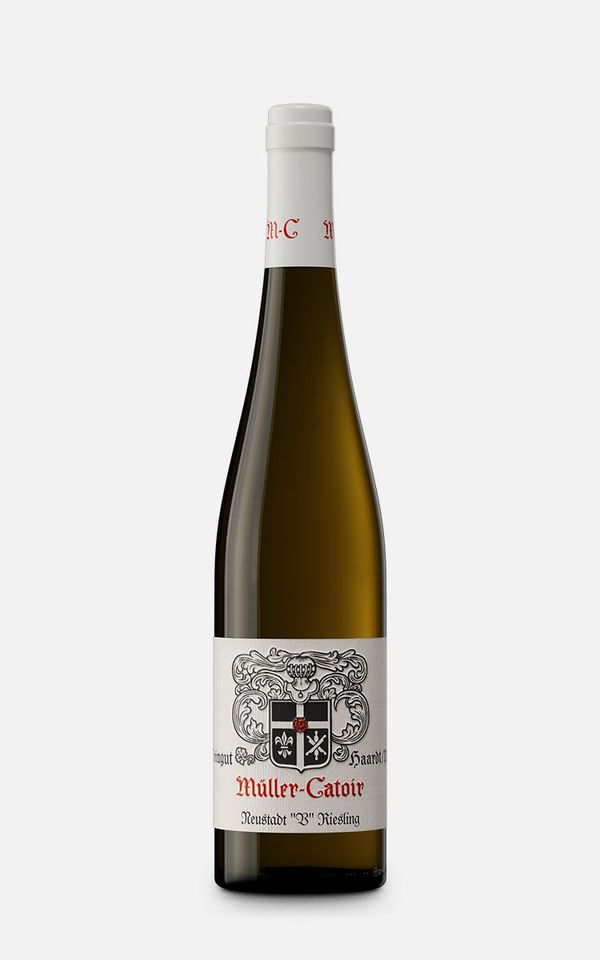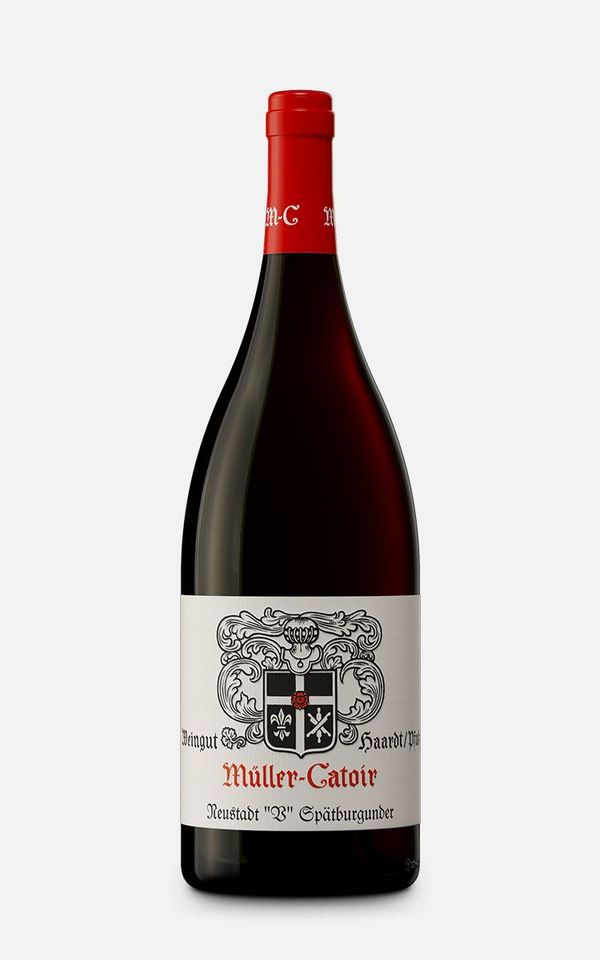The soil
Muschelkalk
The flat, steep slope in Neustadter Vogelsang lies on hard, massive, fossil-rich limestone banks. The gray limestone consists largely of the mineral calcite. A secondary component is dolomite. Microscopically small clay particles are incorporated in small quantities. Finely dispersed pyrite (iron sulfide) gives the stone its gray color. The iron and clay content becomes visible as it weathers. Calcite dissolves in water and is washed out. Insoluble iron remains as a yellowish-brown hydroxide (limonite). At the same time, the insoluble clay forms a beige patina.
The massive limestone banks are separated from each other by thin layers of clay marl stone. It consists of approximately equal parts microcrystalline calcite and clay minerals. When weathered, the soft clay marl swells and quickly breaks down into thin plates. Limonite provides the color.
The massive limestone banks are separated from each other by thin layers of clay marl stone. It consists of approximately equal parts microcrystalline calcite and clay minerals. When weathered, the soft clay marl swells and quickly breaks down into thin plates. Limonite provides the color.
- Data and facts
- Emergence: The trochite limestone layer sequence dates back to 238 million years ago. Neustadt was 6,000 kilometers south, close to the equator in the subtropics. The Muschelkalk Sea covered the Palatinate and large parts of Central Europe. Near Neustadt, the seabed formed a striking ridge. In the sunlight-flooded, plankton-rich shallow water there was a magnificent sea lily biotope. The extensive crinoid lawns of the Vogelsang were teeming with mussels, snails, sea urchins, feather stars, cartilaginous fish and marine dinosaurs. Large amounts of lime were precipitated from the warm, lime-supersaturated seawater. Clay transported by rivers to the sea mixed with lime to form the muddy seabed. Shells and shells of millions of sea creatures sank to the bottom of the sea. Overlying rocks from the Keuper later solidified the seabed into limestone and clay marlstone. When the Rhine Graben sank, the layers broke up into fragments. Today we find the geologically younger trochite limestone formation of the Vogelsang directly next to the 12 million year older Haardtsandstein.
- Era: Triassic
- Age of origin: 238 million years at the beginning of the Upper Muschelkalk period
- Composition: The shallow, limestone-rich, loamy soil is the result of limestone and clay marl weathering. The stones release their minerality. Calcite and dolomite dissolve completely in water. The mineral calcium, magnesium and iron circulate in an aqueous solution. Clay particles built into the limestone and clay marl, on the other hand, are enriched in the weathered loose rock and soil as clayey loam. The released clay minerals are the source and storage of the minerals aluminum, silicon, potassium and sodium. The thin base layer stores little water. With deep roots, the vines find the water they need in gaps, cracks and joints in the limestone banks in dry times. The limestone cliffs and the limestone-rich soil warm up quickly when exposed to sunlight, but only release the heat slowly, which creates a favorable microclimate.
- Vineyards: Neustadt, Vogelsang


